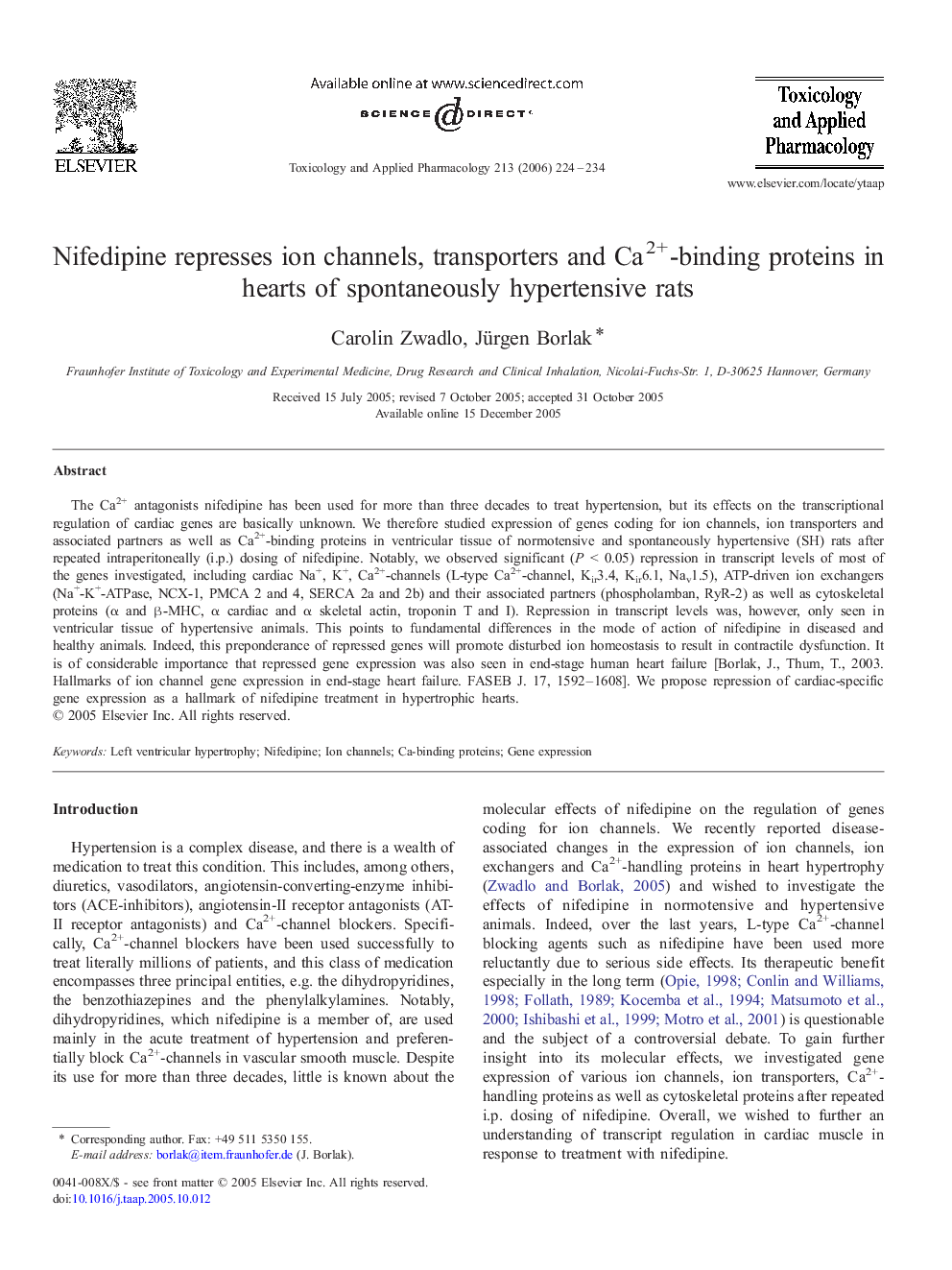| Article ID | Journal | Published Year | Pages | File Type |
|---|---|---|---|---|
| 2571461 | Toxicology and Applied Pharmacology | 2006 | 11 Pages |
The Ca2+ antagonists nifedipine has been used for more than three decades to treat hypertension, but its effects on the transcriptional regulation of cardiac genes are basically unknown. We therefore studied expression of genes coding for ion channels, ion transporters and associated partners as well as Ca2+-binding proteins in ventricular tissue of normotensive and spontaneously hypertensive (SH) rats after repeated intraperitoneally (i.p.) dosing of nifedipine. Notably, we observed significant (P < 0.05) repression in transcript levels of most of the genes investigated, including cardiac Na+, K+, Ca2+-channels (L-type Ca2+-channel, Kir3.4, Kir6.1, Nav1.5), ATP-driven ion exchangers (Na+-K+-ATPase, NCX-1, PMCA 2 and 4, SERCA 2a and 2b) and their associated partners (phospholamban, RyR-2) as well as cytoskeletal proteins (α and β-MHC, α cardiac and α skeletal actin, troponin T and I). Repression in transcript levels was, however, only seen in ventricular tissue of hypertensive animals. This points to fundamental differences in the mode of action of nifedipine in diseased and healthy animals. Indeed, this preponderance of repressed genes will promote disturbed ion homeostasis to result in contractile dysfunction. It is of considerable importance that repressed gene expression was also seen in end-stage human heart failure [Borlak, J., Thum, T., 2003. Hallmarks of ion channel gene expression in end-stage heart failure. FASEB J. 17, 1592–1608]. We propose repression of cardiac-specific gene expression as a hallmark of nifedipine treatment in hypertrophic hearts.
